Step-by-step guide
Optimize your time. Test your presentation on peers. Iterate. Get feedback. Practice. Get hired.
Optimize your time. Test your presentation on peers. Iterate. Get feedback. Practice. Get hired.
They‘re short, checklist-style and presentation-centric.
You get in-depth explainers on how hiring works. We recommend practicing more, however.
A typical interview for a product designer job almost always includes a past work interview, also known as a portfolio presentation.
You want to come prepared.
The presentation helps organize the storytelling and focus on what is necessary to help a hiring party understand your experience.
Please prepare a portfolio presentation with slides — a PDF or Figma (prototype).
Usually, this is what hiring managers are after:
Common pitfalls:
All of that can be fixed with enough practice. Usually, 2-3 iterations is enough.
It is expected that you will talk about 2-3 recent projects you designed.
The usual interview lasts 45-60 minutes, including 15-20 minutes for introductions and questions.
That is why you will have about 30 minutes to talk about your projects.
Introduce yourself: some interviewers have never seen your resume or portfolio. Let them know who you are and why you are here. — 1-2 minutes.
Provide context: what was your company doing, who was the audience, and why does what you worked on matter. They might never have heard of your company before, so give them some frame of reference. — 1-2 minutes.
Talk about 2-3 projects: either that you’re most proud of, or were most impactful, or can show your design excellence. — 20-25 minutes.
Usually, it is expected that you outline the user or business problem and then explain your solution by showing the results of your work. Explain the outcome.
To help structure your story, consider using frameworks like Jobs to be done or STAR (situation, task, action, result).
We recommend that:
Having said that, please create a structure that works best for your projects. These hints are mostly to help you start.
Consider highlighting some of these points in your presentation, they might help a hiring party understand your story better:
Please make sure that your personal contribution can be clearly addressed in your presentation. It is okay to brag.
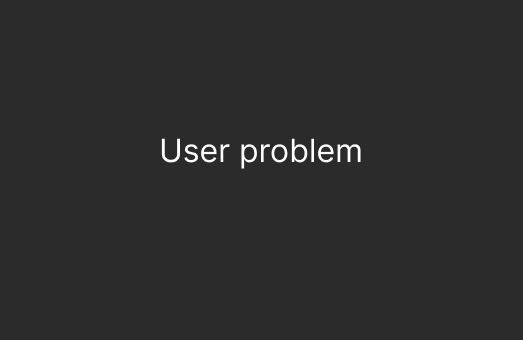
Listeners zone out sometimes, and a blank statement doesn't help them get back to understanding what you are talking about.
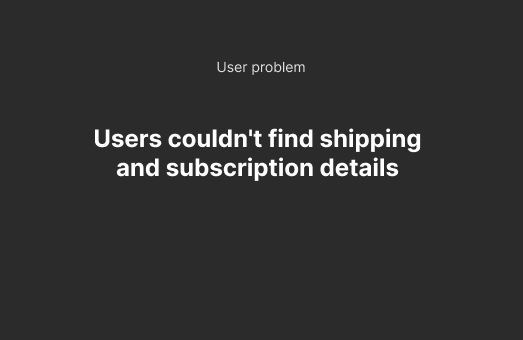
When possible, use a title with a message you want a listener to remember after your presentation.
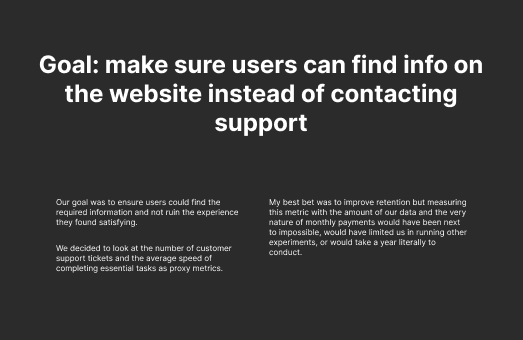
It is tempting to put the text you wrote on a slide. But instead of listening to you, a listener would read from a slide. They will read faster than you, and if your story doesn't help, you will annoy a... reader.
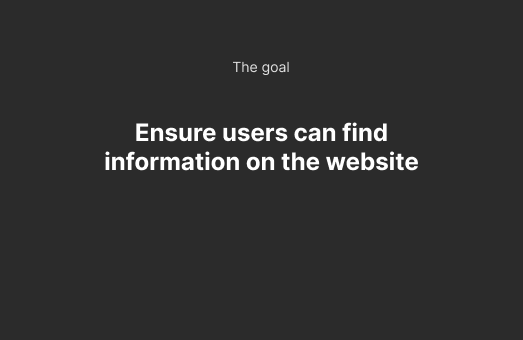
Boil your message down to one meaningful sentence and tell your story. Remember to show images, not texts. Show and tell, don't read.
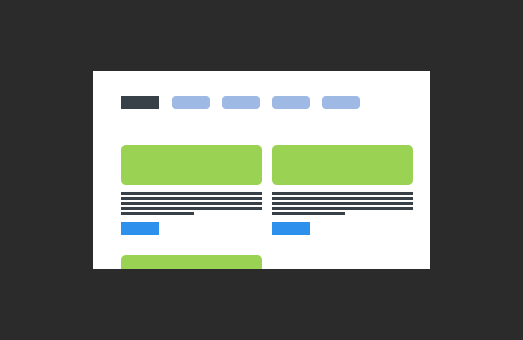
Never use small images when sharing a screen.
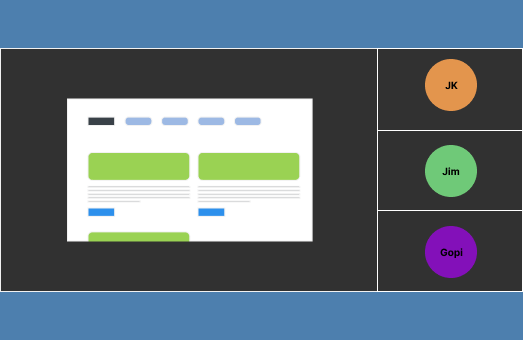
A browser or app UI would consume a lot of screen real estate. Your slides will look smaller than you imagine, and your listener will have a hard time looking at them. Use large images.
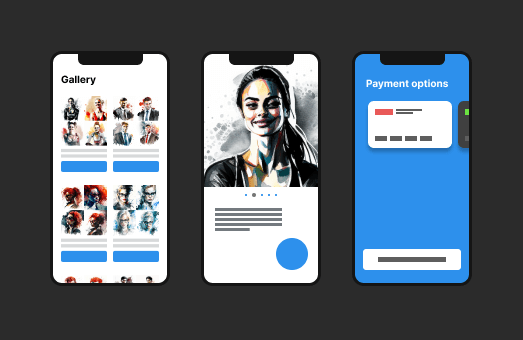

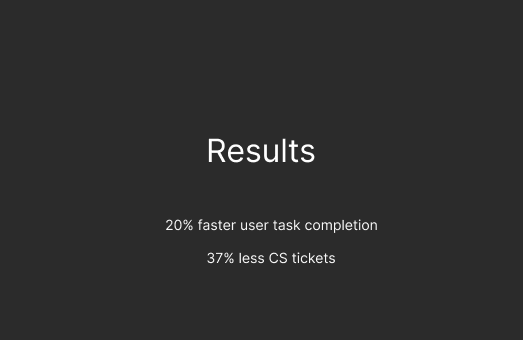
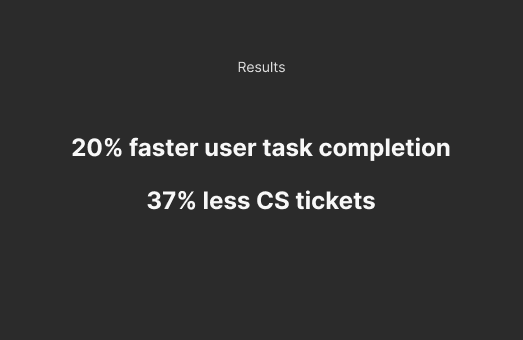
Presentation experience helps you design a better presentation.
Start practicing as soon as you have a draft of one project, book someone in, and learn from experience.
With 2-4 projects in mind, here are the next steps:
Don’t delay your first take.
And don’t worry. Your first take is your first take. NOBODY IS JUDGING. Just make it happen.
Once you know what works for one project, it will become easier for you to talk about more projects. Keep up the good work.
Our users found that they understood how to talk about their projects after listening to others. They realized what the hiring party is after, and empathy made them rethink their approach.
After each session, listeners have to provide feedback. This feedback partially mimics what is expected from a candidate:
You want to make sure that listeners understand what you‘re talking about.
Please make sure your availability settings allow others to book you in. Please accept the invitations to listen to other designers.
Even seasoned designers struggle to pick the right projects. Our process guides you to build a presentation based on the hiring manager's expectations.
We’ve listed the most important questions that hiring managers want to be answered in your portfolio or past work presentation. Use them or the STAR method to prepare your slides.
What is important when talking about the context of your projects?
Showcase your results.
Explain your individual contribution.
Writing helps some of us to prepare better. You'll have to fit three projects into 1800 words max.
Make sure the information on each slide is useful, adds to the story, and helps the listener understand it.
Presentation and slides are almost a requirement. It helps the candidate to manage time and focus on what is important.
Knowing what mistakes to avoid before you start building a presentation is cool (feat. considerations and recommendations from Google recruiters).
Intro, context, case studies. Make sure interviewers will understand the scope of your work and your background.
Even though interviews are scheduled for 45 minutes to an hour, make sure you can deliver your story in 30 minutes.
Use real-life job interviews as opportunities to collect offers and make the most of your job search.
Hiring managers can afford to be picky because of the large amounts of applications. Learn how to stand out in the application process.
Here's why hiring processes are so complicated and take a long time.
In mature companies, a team will interview candidates on the final day and submit their feedback to a hiring manager. Here's why it matters.
Here's what happens behind the scenes after you manage to navigate through all stages of interviews.